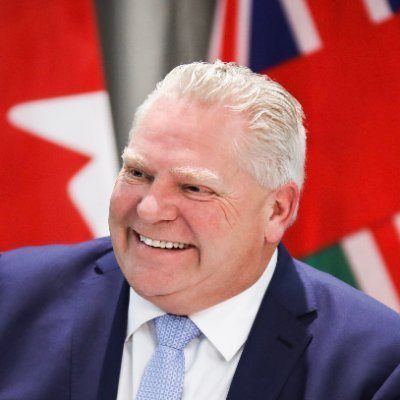Toronto/CMEDIA: Over 60, 000 Ontario public servants are reportedly being ordered by the Ontario government to work from the office four days a week starting this fall and then full-time in January.
This transition “represents the current workforce landscape in the province,” announced Caroline Mulroney, who serves as the president of the Treasury Board, in a news release
Having previously been mandated to work from the office a minimum of three days a week, the province said that, based on the nature of Ontario Public Service workers’ work, over half of all public servants are already required to attend the office in-person full time.
The news follows the announcements by four of Canada’s big banks — RBC, Scotiabank, BMO and TD — that staff at their Toronto headquarters must spend at least four days a week in the office, effective this fall.
‘Everyone needs to go back to work,’ says Ford and added that being uninfluenced by the bank mandates, he spoke to business leaders who agree “everyone needs to go back to work.”
“As the government delivers on our plan to protect Ontario, we will continue to drive public service excellence for the people of Ontario. Effective January 5, 2026, the Ontario Public Service and its provincial agencies, boards and commission public bodies will return to the office full time,” Mulroney wrote.
Starting on Oct. 2, employees currently working in the office three days a week will need to increase their in-person attendance to four days a week before remote work comes to an end in January, the province said.
“We look forward to having everyone back; we’re very grateful for the work they do. We have the best public service in Canada and I appreciate the work they do every day,” Ford said.
The move is an “important step” supporting the government’s efforts to build a “more competitive, resilient and self-reliant Ontario.” Mulroney said.
Having been first called back to the office for a minimum commitment of three days per week back in 2022, roughly half of, Ontario’s public servants at that time had been working remotely for part, or all, of the two years that followed the onset of the COVID-19 pandemic.
Federal employees in the core public service were called back to the office last year, for a minimum of three days a week.
While talking to reporters about the decision, Ford said at an unrelated news conference on Thursday morning that he believes that workers in the office are “more productive”
“How do you mentor someone over a phone? You can’t. You’ve got to look at them eye-to-eye, over the water cooler, wherever, train them, camaraderie. Plus, the economy too,” he said, adding that businesses in Toronto’s financial district have suffered from remote work policies.
“I’ll just use downtown Toronto, for example, the PATH…I understand all the companies I’ve talked to, from the banks to the insurance companies, to everyone else, everyone needs to go back to work,” he said.“
The province’s move comes just two weeks after it reached a new collective agreement with AMAPCEO, which represents some 14,000 professional, administrative and supervisory employees in the Ontario Public Service.
The province was “hellbent on removing” employees’ options for remote work during those negotiations, says AMAPCEO president Dave Bulmer.
There should be no changes for provincial employees who have a formal, signed agreement allowing them to work remotely, Bulmer said and added AMAPCEO members who want to work remotely should make an official request now.In a statement released following the announcement, the president and CEO of AMAPCEO, the union which represents thousands of Ontario public servants, said he was “incensed” by the news.
“The Ontario Public Service (OPS) Employer was hellbent on removing your right to remote work in the last two rounds of bargaining. The Secretary of Cabinet wants unilateral control over where, and when, you work. AMAPCEO successfully fought back and preserved your ability to request an alternative work agreement, ensure it’s considered fairly, and dispute any denials,” he said, pointing to a new 3-year tentative agreement that was reached with the province in July.
“AMAPCEO is going to continue to fight for flexibility for members who want it and stop the Secretary from dragging Ontario’s hardworking public service back to the Stone Age.”
Officials from OPSEU, the union that represents roughly half of the Ontario Public Service workforce, said they will issue a statement in response to the changes later on Thursday.
Federal government employees are currently subject to a three-days-per-week minimum in the workplace, imposed last September. There’s been some evidence since that the policy is not being strictly enforced.





